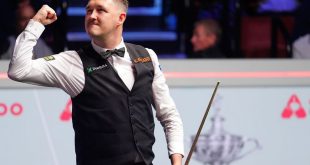One of the strangest observations in the quantum world is that quantum objects sometimes act like a particle and sometimes like a wave. This crazy quantum behavior is now being explored quantitatively. In A test seen by South Korean researchers How ‘wave-like’ and how ‘particle-like’ are light particles.
Experiments show that a quantum object can act as a wave and a particle. But, the physicist asked Thai Hyun Yoon And chemist Minhong Cho From the Basic Science Institute in Seoul, is this a particle that acts like a wave? Or is it a wave that acts like a particle? In other words: Can you measure whether a quantum object is a high wave or a high particle?
Illuminated by two splits
In which double wave particle behavior is visible Two split test. This famous physics experiment consists of a plate with two thin slits and a screen behind it. When you illuminate the laser light in two splits, a pattern of multiple parallel light and dark lines appears on the screen.
This is because you can see the light shining from both splits. From each crack rises a wave pattern with peaks and valleys as if you were throwing a stone into a pond. Peaks and valleys can turn off or strengthen each other. Where they reinforce each other, lines of light appear on the screen, where they turn off the darkness.
This so-called interference method arises when you shoot light particles into splits one by one. That sounds crazy. You expect each particle of light to pass through one of the two splits and then land on the screen. It should create two parallel lines of light. But this does not happen due to the special quantum behavior of light. Even a particle of light acts like a wave, passing through two splits and forming an interference shape.
This changes when you see which fissure the light particles go through. You can see that each particle only passes through one of the two splits. Two lines of light get on the screen with a detector next to the splits. Light particles then act as particles that can only pass through a hole. This special role An ‘observer’ in quantum physics Not yet properly explained.
Wave-like or particle-like
South Korean researchers have used a variant of the double split experiment to determine whether some light particles are high-wave or high-particle. Theoretical Samples predict The wave or particle-like nature of a quantum object depends on the source.
In their experiment, the researchers looked at light particles (photons) emitted by a crystal. They both shone through the laser Lithiumneopodicrystalline. As a result, each crystal forms two light particles. The two light particles have a special quantum band because they appeared simultaneously in the same crystal. They behave together as a quantum object.
One of those light particles sent researchers to a double-cut experiment to determine its wave-appearance. The path of the second light particle was observed to investigate its uniqueness.
Next, the researchers changed the intensity of the glowing laser in the crystals. This changed the probability that a crystal would emit two light particles. If only one of the two crystals has a good chance of emitting two light particles, the interference pattern of light and dark lines in the double-split experiment appears to be almost invisible on the screen. That is, light is more like a particle than a particle wave.
If you adjust the intensity of the laser so that the probability of emitting two light particles is the same for both crystals, the light particles will become more like a wave. In that case, the screen interruption pattern will be smooth and clear.
Quantum object control
Researchers have shown that the theoretical prediction is correct. The source of light particles (crystals with laser here) actually affects the wave or particle-appearance of a quantum object.
‘This is a great achievement. The researchers were able to create a single light particle state in which they controlled all the factors, ”he says Krish AgarwalPhysicist at the University of Texas A&M, In The world of physics. Arkaval was not involved in the experiment, but was involved in earlier theoretical predictions of this double quantum behavior.
This experiment not only helps to better understand quantum behavior, but may also have applications in quantum technology, Such as quantum networks, Said Cho, one of the two authors of the study. This additional control of wave or particle behavior is an interesting and effective way to control quantum states that are important in the field of quantum information.
 The Press Stories
The Press Stories

